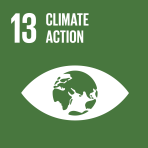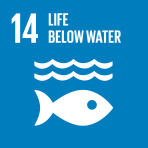Phytoplankton primary production

- Author: Margareth Kyewalyanga
- Main Title: Regional State of the Coast Report , pp 212-230
- Publication Date: March 2016
- DOI: https://doi.org/10.18356/7e303d60-en
- Language: English
Primary productivity may be defined as the amount of organic material produced per unit area per unit time; or simply as the product of phytoplankton biomass times phytoplankton growth rate (Cloern and others, 2014). Marine primary production plays an important role in food web dynamics, in biogeochemical cycles and in marine fisheries (Chassot and others, 2010, Passow and Carlson 2012). The term plankton, which means wandering or drifting, generally encompasses three groups: the phytoplankton, the photosynthetic (plant) component; the zooplankton, which is the animal component and the ichthyoplankton which comprise the fish larvae. However, this chapter will concentrate on the plant component, the phytoplankton. Phytoplankton is the foundation of the aquatic food web, meaning that they are the primary producers (Vargas and others, 2006). A common feature to all phytoplankton is that they contain chlorophyll-a; but there are other accessory pigments such as chlorophyll-b and chlorophyll-c, as well as photosynthetic carotenoids (Kirk 1994, Barlow and others, 2008). These pigments absorb solar energy and convert carbon dioxide and water into high-energy organic carbon compounds that fuels growth by synthesizing vital required components such as amino acids, lipids, protein, polysaccharides, pigments and nucleic acids. The photosynthetic process produces gross primary production; and the difference between gross primary production and respiration gives net primary production. Respiration is the release of carbon dioxide by photosynthetic organisms; leaving a net photosynthetic fixation of inorganic carbon into autotrophic biomass. Phytoplankton in the ocean contributes to roughly half of the planetary net primary production (Field and others, 1998). Through sinking of the fixed organic matter, primary production acts as a biological pump that removes carbon from the surface ocean, thereby playing a global role in climate change (ASCLME/ SWIOFP 2012).
-
From This Site
/content/books/9789210601573s007-c004dcterms_title,dcterms_subject,pub_keyword-contentType:Journal -contentType:Contributor -contentType:Concept -contentType:Institution105


